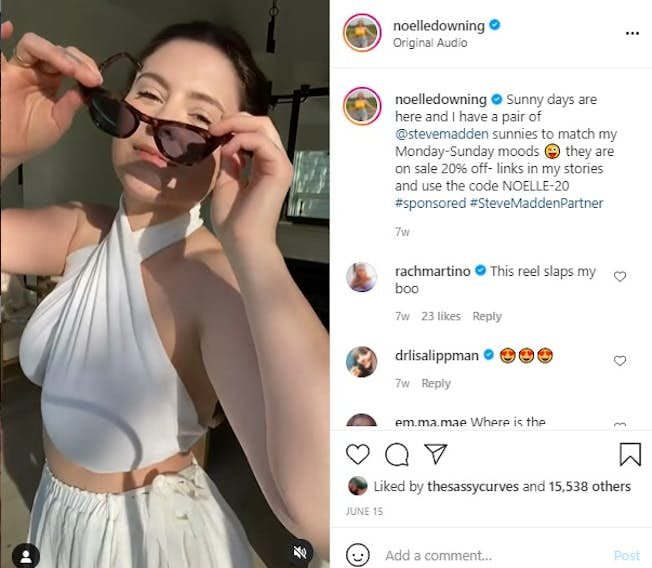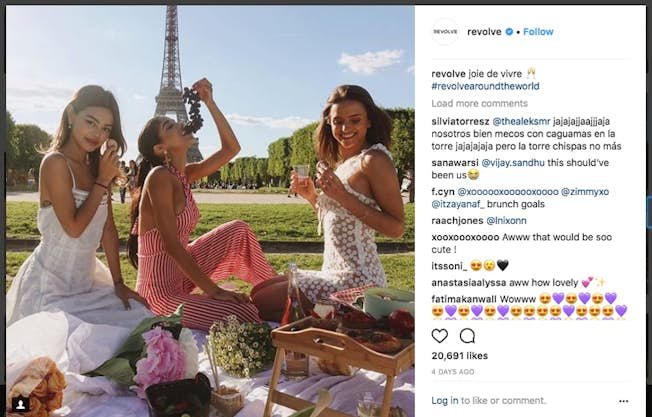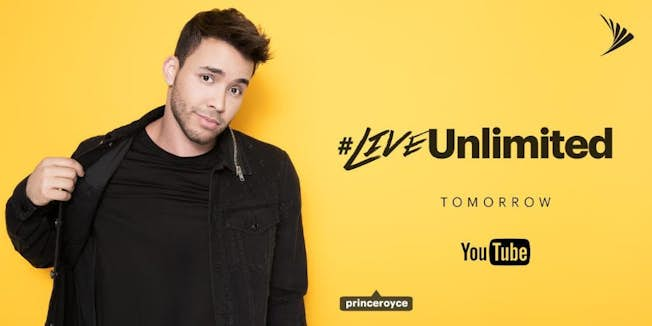Generation Z is taking over. The young people born after 1996 are the most racially-diverse and best educated sector in society and their consumer behavior is beginning to define many marketing tactics.
As digital natives, Gen Z are unique in that they have never known life without digital technologies like smartphones and social media. This shift has transformed the way we communicate, connect and market with one of the fastest growing consumer markets in the world.
So how can brands engage with this new generation of customers? In this article, we explore 9 ways Gen Z are changing consumerism and how brands and industries can cater to them.
1) Optimize Social Media Activity
Gen Z is known for being empowered and active social media users. The generation freely communicates, networks, and reviews and connects brands online with 68% reading reviews and suggestions of people online before making a first purchase of a product.
Given their activity and reach in the social space, Gen Z has become an influential and important customer cohort for brands. This pushes marketers to shift content creation to cater to a more interactive demographic. While they still interact with content that millennials like — e.g. articles and videos — Gen Z wants more from brands, specifically on social media.
Changes in interaction may mean relying more heavily on polls, and quizzes or responding with customization to comments and chats. Additionally, Gen Z likes user-generated content. This means the demographic wouldn’t think of purchasing anything without conversation points and reviews guiding their decisions.
Without hundreds of reference points, reviews, photos and videos, a product may be easily dismissed or overlooked by more popular counterpoints.
2) Be Authentic
The rise of social media influencers on Instagram is not by accident. Did you know that 63% of Gen Z customers prefer to see ‘real people’ in ads whereas only 37% of millennials feel the same?
As a result, “Insta-famous” accounts are goldmines for brands. Fashion models, world travelers and gym rats, with seemingly normal lives, are becoming the face of the platform and consumerism. Brands are leveraging these Instagram accounts for the users’ large network of followers as well as their authenticity.
Noelle Downing, is an example of a blogger and influencer at the ‘insta-famous’ level. Downing has landed many sponsorships, as seen in this post promoting Steve Madden to her 450,000 followers.

Businesses should note that Gen Zers accept celebrity endorsements, but only if they are transparent about their advertising motives.
3) Keep it Succinct
At one point, many marketers became baffled when they realized that the millennial attention span averaged 12 seconds. Well, brace yourself...
The attention span of Gen Z consumers is measured at only 8 seconds.
This means it’s even more important to get to the point with your marketing message in engaging with this cohort. One way of keeping this generation interested is to take advantage of visuals instead of plain text — especially long-form text.
In an ever-changing Internet age, short-form writing is an essential skill. To accomplish this marketer must spice their content with visual elements like:
- Memes
- Emojis
- GIFs
Additionally, new phrases and acronyms will help marketers reach the brevity. To drive engagement it’s key to be up to speed with how Gen Z communicate and the references that will engage them.
4) Understand Who Your Brand is Talking To
Gen Zers are also more broadly progressive than generations of the past. To start, they are the most ethnically diverse generation in US history, comprised of 47% ethnic minorities.
Additionally, they are defined by ‘fluid personal identities’, which according to Forbes, means breaking from traditional forms. Furthermore, according to JWT Intelligence, only 48% identify as exclusively heterosexual as compared to 65% of millennials, and only 44% say they always buy clothes designed for their own gender, compared with 54% of millennials.
Additionally, they can also be defined as the Pluralist Generation – they have conviction in diverse races and religions and believe people can coexist in society.
To brand to this modern generation, luxury brands are moving away from the so-called culture of 'exclusion' to coincide with the new face of consumerism. Rather than zeroing in on limited access to the product, and deliberately detaching from communications, brands like Hermès, Revolve and Supreme are working to be more inclusive, engaging and open.
In order to do this, Olga Pancenko, COO and VP of marketing for PERRIN PARIS, recommends the following:
- Never interfere with your network. Don’t limit it, allow it to thrive. Which is what Supreme has achieved with its viral success.
- Don’t try to give the impression of engaging your audience–just engage them. This means using customers, employees and real people as the face of the brand, and using media to engage fans with product-related decisions. Glossier beauty brand are masters at this.

Last but not the least, try to sell experiences. For instance, Revolve uses insta-famous fashion and travel bloggers to not only sell outfits but experiences as well, and use #revolvearoundtheworld as their hashtag.
5) Be Mobile and User Savvy
Even though Gen Z are digital natives—and versatile with many devices—they are mobile first.
In fact, PopSugar estimates they are twice as likely to shop on a mobile than millennials. As such, mobile devices like smartphones and tablets should be the focal point of your brand’s digital front for optimal engagement.
But, being mobile-friendly doesn’t necessarily mean a presence is all that matters. Part of a truly comprehensive mobile strategy is a good user experience (UX).
As Gen Zers have grown up with digital, they know good UX when they see it. To accomplish this consider short sentences rather than paragraphs. Use subheads and bullet points more often, add more white space for easily navigable pages and be diligent with mobile interface design.
6) Connect Correctly and on the Right Channel
Gen Z basically grew up with YouTube, and as it turns out, it is still the favored website of the generation, meaning they are more likely to use the platform than others such as Facebook or Instagram. In addition, the cohort sees email as outdated being three times likely to open a chat message and 1 in 5 stating that Snapchat influences their purchase decisions — double their millennial counterparts.
Finding the right channel is only part of the equation, pitching the right message is also crucial.
Sprint Mobile, has devoted time and energy to connecting correctly with a younger generation. To do this they formed Candybar, which is a team of Generation Z and Millennial employees who now run Sprint’s youth marketing division. One of the first campaigns Candybar launched was the #LiveUnlimited Sprint campaign, which was entirely digital and leveraged social media influencers rather than actors.

The campaign’s focus was on creating and giving more than promoting the brand and taking consumer dollars. For example, incentives for interacting with the campaign such as:
- Free subscriptions to Tidal so they could listen to the new Jay-Z album
- Sponsored YouTube videos from favorite influencers
At the core of the promotion, Sprint aimed to bring awareness to their new business structure which redefined its service to provide unlimited data and texting, two features deemed important by Gen Z
Research has found, the more personal and special this interaction gets, the more loyalty and excitement the customer will show.
7) Embrace a Messaging Shift
Over the last few years, brands have become accustomed to the messaging millennials prefer.
Marketing teams have zeroed in on the key talking points like experience over material objects. Life is about taking risks while job hopping is the new professional normal.
And because Gen Z and millennials are so close in age, and grew up with similar technological exposure, there is bound to be overlap in the messaging, right? Unfortunately, that's not the case.
According to a recent poll comparing the two generations, it turns out the demographics have many opposing views on a number of subjects.
Gen Zers are less likely to take risks, seeking stability and security in their jobs and finances. They are also less likely to prioritize a work-life balance, with only 38% of Gen Zers saying it’s important compared to nearly half of millennials.
Additionally, Gen Zers are more likely to care about their personal income than millennials, which is great for marketers — perhaps the new generation will have more discretionary income.
Changing the messaging to accommodate new personal goals of the generation will help reshape the message to a changing customer base.
8) Leverage Lessons from EdTech
EdTech is a fast-growing vertical, and one that Gen Z is quite familiar with. Schooling is commonly blended between in-class and online curriculum, which has transformed the way the generation learns.
In fact, as INC points out, 33% of Gen Z prefer to watch their lessons online, while 32% choose to collaborate with their classmates via the Internet.
Online research tendencies reach further than the classroom. Gen Z can research themselves out of virtually anything, from classroom to product inquiries.
What that means for brands, they are researching you more than ever. Having a strong online presence and digital reputation will be the key drivers when it comes to marketing for the cohort.
9) Be a Part of Something Bigger Than Your Brand
93% of Gen Zers say their decision to work in a company is greatly influenced by the organization’s impact on society. And, to prove their point, 30% of Generation Z claim they are willing to receive a 10-20% pay reduction just to work with a company that shares their causes.
Gen Z’s social involvement goes beyond the workplace.
Growing up in the wake of the climate change debates and countless government scandals, Gen Z has been alive for some of the most horrific acts of gun violence and risen above to speak about it — consider the Emma Gonzalez and the Parkland kids, for instance. The movement and progress can’t be ignored.

By projecting this sense of contribution and caring in your brand, Gen Z may be more susceptible to interaction.
The insights we have about Gen Z may be robust at the moment, but they are anything but complete.
Gen Z is bound to evolve and surprise us in the years to come. After all, the mentality and purchasing patterns of Gen Z are still developing. Many of those within the demographic are in their teens, but the generation is also just embarking on their childhood.
Time will tell how brands can truly cater to this changing consumer. But the key for companies is to be aware of the growing cohort and start catering for their needs and interests to stay relevant and competitive.
(First published July 2018, updated July 2021)
Related
- Categories:
- Articles
- Customer Experience (CX)
Upgrade to Power Membership to continue
your access to thousands of articles, toolkits, podcasts, lessons and much much more.
Become a Power Member- Login
- View Courses
- - - -
- Courses
- Resources
- - - -
- My Account
- Change Password
- Logout




